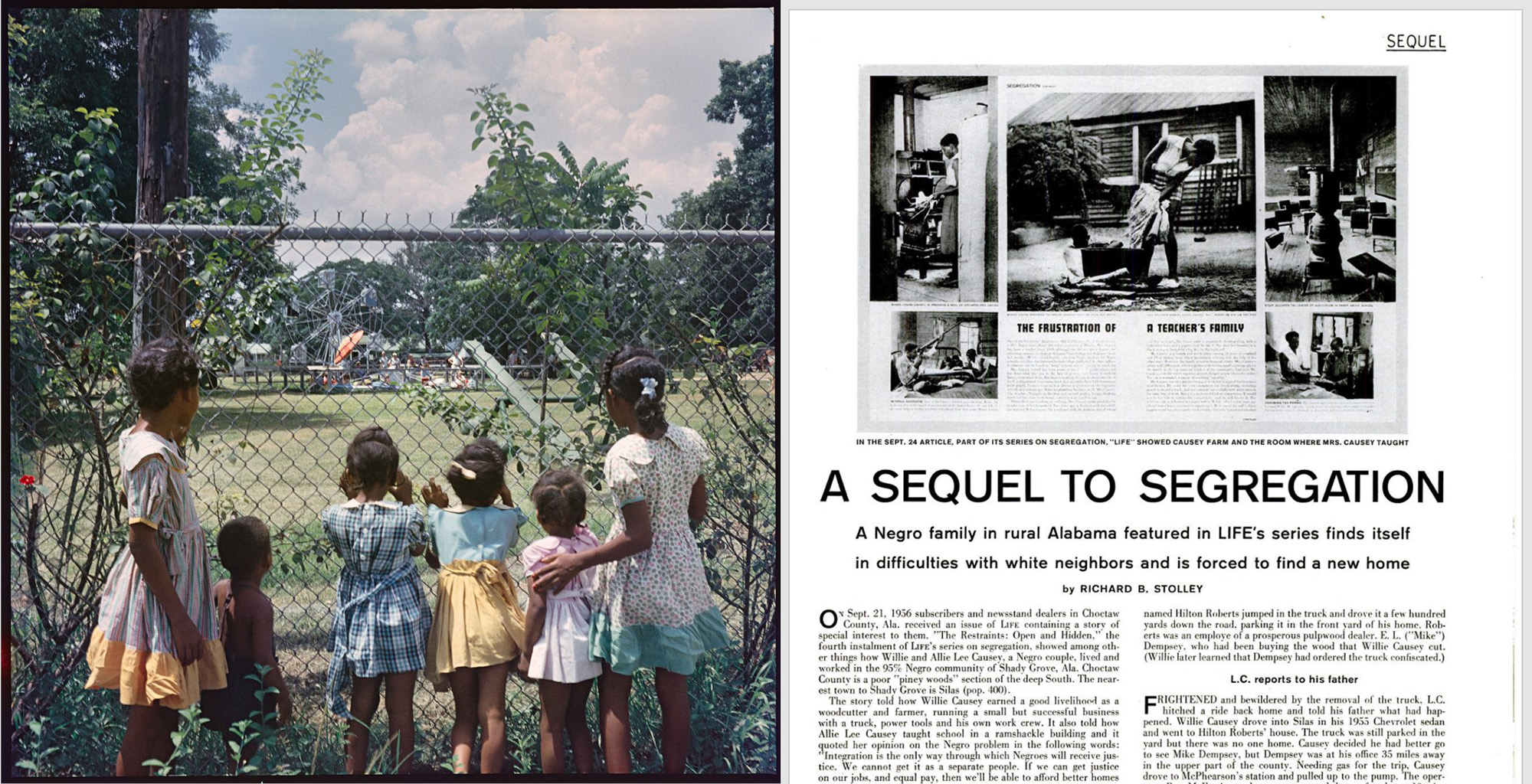This weekly post has everything you need for completing this week’s self-paced content and readings, plus an outline at the end for what’s covered during class meetings. This week is about social and technological influences on depictions of race in U.S. photojournalism, with a focus on the 1960s Civil Rights movement and today.
Gordon Parks
One of this week’s readings, an essay by John Edwin Mason, directly follows his essay from last week about the photos used to represent protests in Minneapolis after the killing of George Floyd in May 2020. This reading goes back in time to highlight the work of Gordon Parks, one of the most influential Black photographers in the U.S. during the 20th Century.
Parks learned to contain his anger and channel it into his work as a photographer, writer, and, decades later, a filmmaker. During the 20 years that he spent as the only African American on the staff at Life, he produced nearly a dozen lengthy photo essays that brought the reality of American racism home to the magazine’s millions of mostly white, mostly middle-class readers.
Watch this short video to get a sense of how Gordon Parks talked about his own work:
The reading talks about one photo essay he did about everyday life for one family in Harlem. Another, earlier photo essay he made for LIFE focused on daily routines for Black families in Alabama under segregation. This story got a lot of attention nationally, but the family featured in the story was forced to move after losing jobs and facing social ostracism as a result of the story.
Review & Reflection
- How did Gordon Parks’ upbringing and background shape his photography?
- Why was it considered controversial to show everyday life of Black families?
Civil Rights & Conflict
Most of the photographers who covered the Civil Rights movement in the South were not themselves Black. One of the best-known photographers is Charles Moore, who worked for a local newspaper in Alabama and photographed Martin Luther King Jr. frequently as he became more famous. (You may remember Moore’s name or his photographs from a reading way back in Week 1, which contrasted his civil rights photographs with the modern era of ubiquitous smartphone photos and video.)
In this video, Moore describes the events behind some of his most notable photographs:
Review & Reflection
- How did Charles Moore get to know Martin Luther King Jr.?
- What motivated Moore to photograph Civil Rights demonstrations?
- What are some examples of events we would likely not know about today if he hadn’t been there to take photos?
Representing Dark Skin
Since photography exposure is about light and contrast, photo technology designed for pale skin does not always record darker skin well. This is a main idea in the personal essay on this week’s reading list.
The inconsistencies were so glaring that for a while, I thought it was impossible to get a decent picture of me that captured my likeness. I began to retreat from situations involving group photos. And sure, many of us are fickle about what makes a good portrait. But it seemed the technology was stacked against me. I only knew, though I didn’t understand why, that the lighter you were, the more likely it was that the camera — the film — got your likeness right.
This short video is recommended if you have not already seen it. It goes into a little more detail about the technical aspects of film mentioned in the essay.
Review & Reflection
- Why did early color film capture darker skin tones poorly?
- Why is black and white sometimes better at accurately showing different skin tones?
- How do technological limitations in photography affect how people see themselves and others?
Monday
• Preview of week’s materials
Wednesday
• Photo discussion: Voting in 2016
• Going over the weekly assignment
Friday
• Content analysis: Spokesman-Review pages and form
